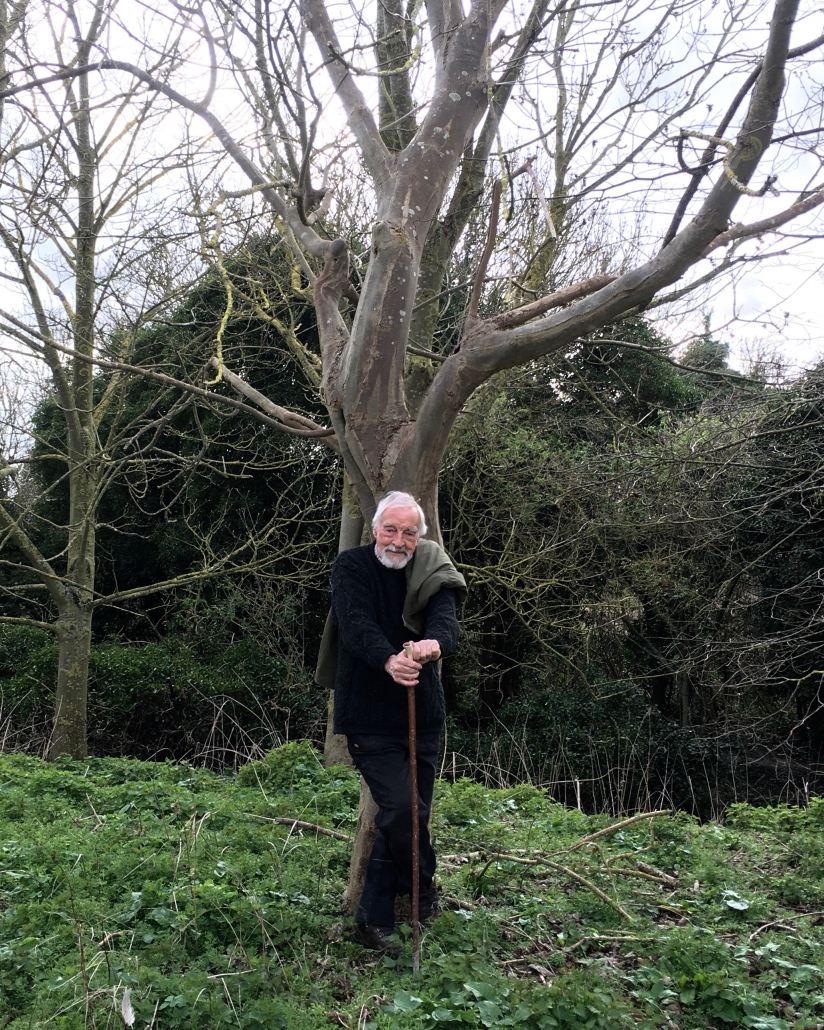Grounded
Well, that’s the first week over. How long we shall be grounded is anybody’s guess, and how efficient in checking the Coronavirus it will be is equally uncertain. Uncertain too is how reliable all the statistics are, for everyone seems to be working on different bases. Be that as it may: these weeks ahead of enforced seclusion – well, in the monastic vocation you took a vow of stabilitas loci, staying in one place – can be seen either as being in an open prison, or as an opportunity. So far, attitudes uncertain. Certainly my male neighbours, and I indeed, are in what my Lady of the Needles points out is the “default man position” of working their socks off, tidying gardens as never before, cleaning cars that are going nowhere, and I have set my vegetable garden, made new raised beds, put up a frame for the beans I shall set next month, and, most satisfying, have built a new pantiled shed out of bits of rubbish – old pallets, offcuts of timber – I have had lying around for years. My Lady says it is pretty, nay impressive – and means it!
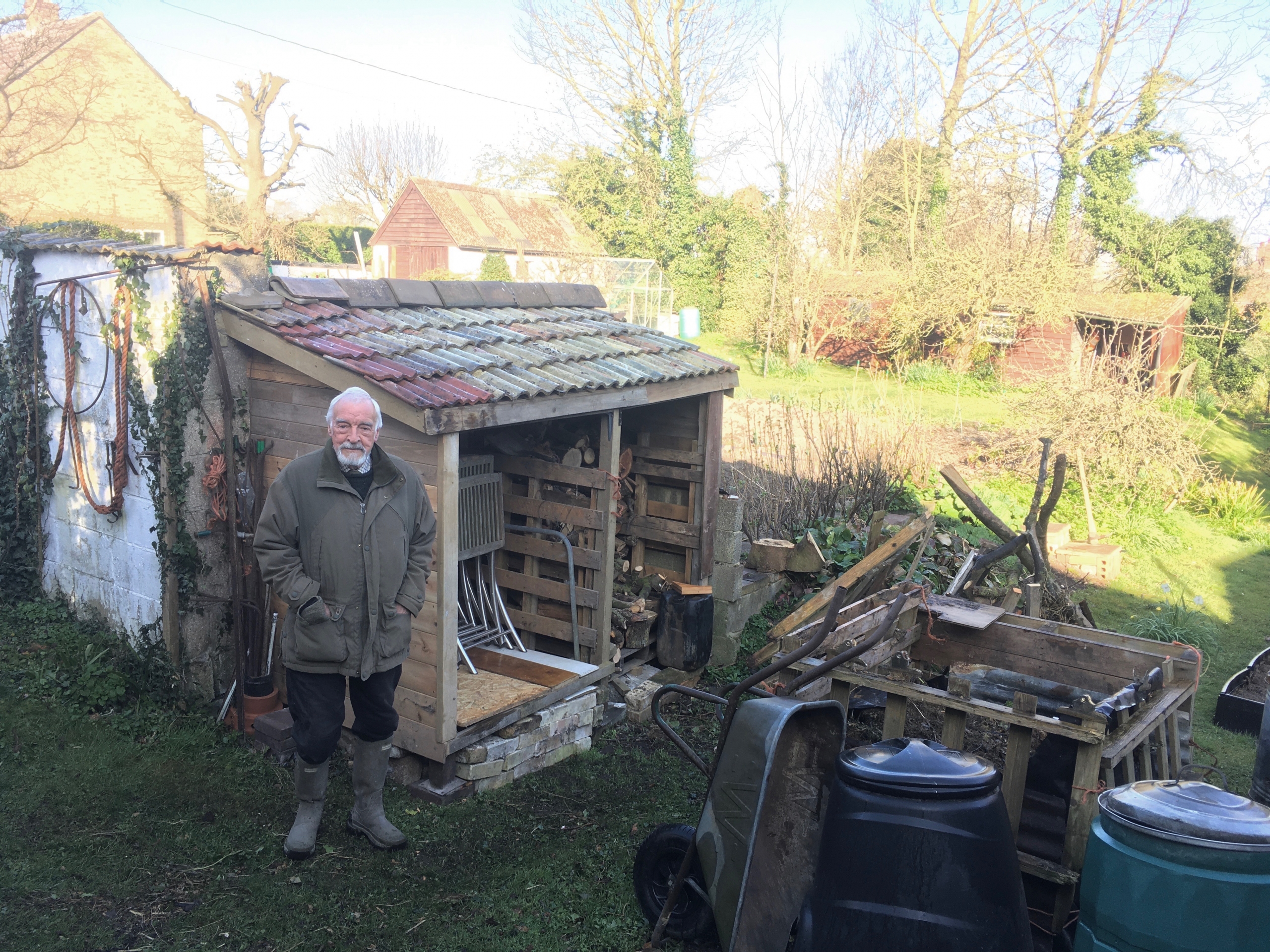
But when all those jobs are done…? We are so lucky here: we have a garden, and an empty countryside, and can get exercise and light and air when eyes get tired of reading. And a book to write (of which more in another blog). Others stuck in small upstairs flats in towns may be in far worse case. There the distractions, accommodations, may have to be found inwards – and indeed, that is what we are seeking too. For this lockdown – ugly word, with an ominous origin in how prisoners were treated in California in the 1970s – coincides with Lent, the solemn period of the year when some of the normal habitual hedonisms are deliberately suspended. It is a time when one tries to pause, take stock, think about what one is and has been, and what really matters in our journey, however long or not it may be and however far we are along the road (but we can’t know that) towards death. And to what comes after. So not being able to go into work, or My Lady of the Needles being barred from practising her ministry – a big financial loss, as it happens, falling as she does between various stools for government assistance – coincides with this yearly period of retreat and reflection. Though we cannot go to our beloved St Mary the Less (aka Little St Mary’s) for the Lenten services, and to our great grief will not be able to go for the great Triduum leading up to Easter, we can spend time meditating together, at our prayers and reading, saying and singing Compline each night, and joining through ‘the miracle of modern science’ (aka Facebook) Father Robert and many others of the community as he celebrates Mass ‘in the comfort of his own home’, as they used to say.

And we can go for walks in the ever changing light. Here, in the Fens, this week has seen a spell of spectacularly lovely weather, and while we have been out enjoying it there has also been a feeling of real sorrow for those who have not our luck. We have done all the usual circuits – they may well become rather too familiar if this goes on for six months, as some are now saying – and it is a joy to see once more the buds bursting with life renewed, to hear the birds busy about nesting, to watch a heron lift gravely and gracefully on those broad wings off the edge of the pond where we scattered Hector the Labrador’s ashes.
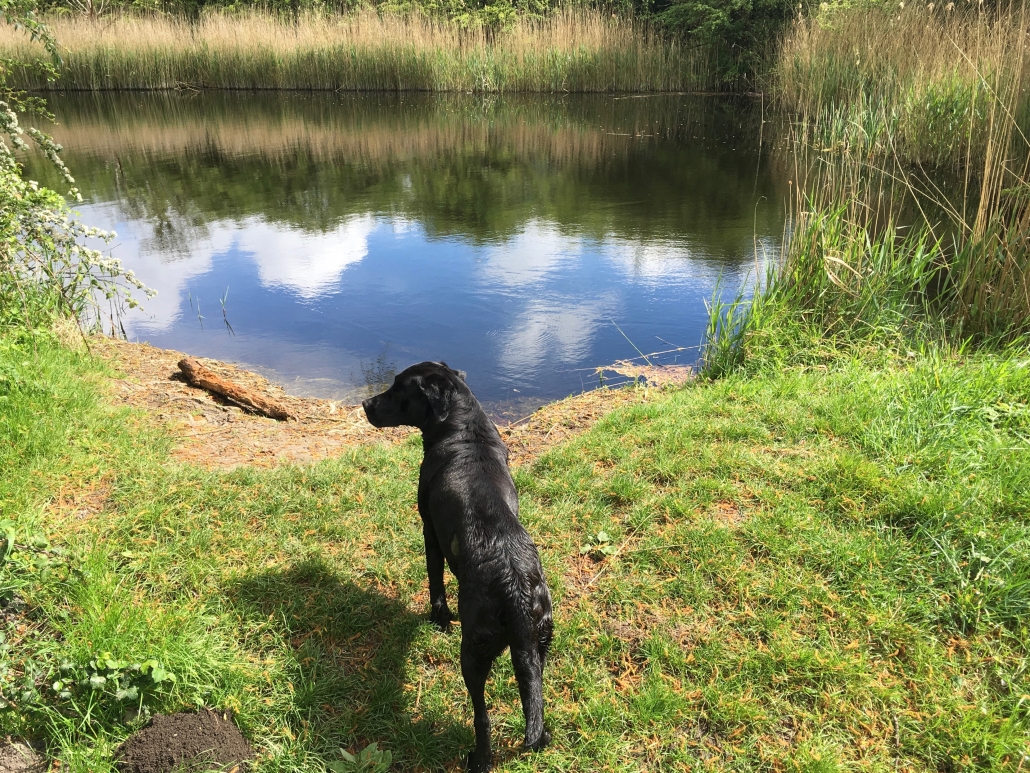 Hector by ‘his’ pond, 2017
Hector by ‘his’ pond, 2017
I also get to check up on my trees. You see, ever since I came to this village decades ago I have always been a surreptitious tree planter: trees were then seen as a waste of good land. Even now, a respectable elderly gentleman of regular habits, I pick up pockets of acorns and conkers to scatter them in places where they might have a chance, where agricultural machinery can’t reach and where they will be out of the range of weedkillers. I still transplant ash seedlings to places where they may make it to be big trees. In all, within a half mile radius of this house, I can count 56 trees, some now mature, which I have planted, including one noble oak, and I have cut down more that had reached firewood size. Now, as I write, I look out of the study window and on the trees at the bottom of the garden, now dressing in their new leaves, I see a jay. I know they are pirates, but they are spectacularly handsome ones, and I do like them despite their guzzling of eggs and small birds when they get the chance. And they do even better than I do.
“I knew this tree when it was a pup”
To explain: there is an old country saying, ‘The thorn is nurse to the oak.’ For years it never made sense to me, but by a serendipitous chain of unconnected conversations and reading it does now. A mature oak produces many, many acorns, and not a one of them has a chance of growing beneath the deep shadow of the parent tree. However, the glamorous jay who visits my garden on his raids – actually there may be more than one, but I can’t recognise individuals – is the hero. For in autumn jays will pick up several acorns in their beaks – an accomplishment I find as extraordinary as the puffin with its little fish and sandeels – and fly off to a bramble thicket or a hedge bottom, often enough hawthorn or blackthorn, where it buries them. Now, in early spring the acorn sprouts, and puts down a strong taproot, while at the same time opening two fleshy leaves full of protein to photosynthesise. Now our clever Jay – I am inclined to give him/her a capital – remembers where he put the acorns a few months back, and does the rounds, and finds succulent protein-rich leaves pushing up to the sun through the leaf litter below the thorns. Just what a hungry bird needs at this thin time of year, and the infant oak with its long taproot can do without the leaves, for there are more where they came from. And so began many of the oaks that once clothed the wildwood country when men were few, and later made our houses, and were shaped into our ships.
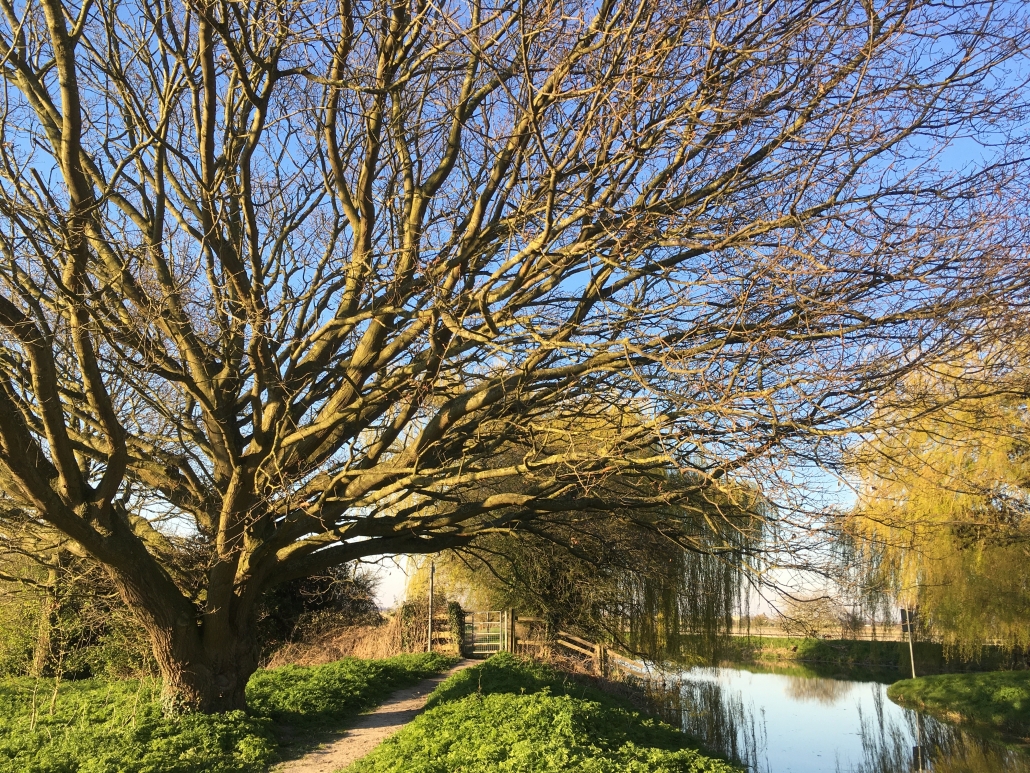 The oak I planted 45 years ago.
The oak I planted 45 years ago.
Trees are our fellow creatures, who share the planet with us, and on their exhalations our inhalations depend. In their rings we read the weather centuries ago, of sun and storm, drought and flood, heat and cold – of what it was like to grow when the world was younger. A forest shares a history, which each tree remembers, records, even after it has been felled. And to me trees have always had different personalities, even within a species, just as they all speak with different voices, from the roar of a big oak resisting, playing with, outshouting a gale, to the whispering chatter of aspen and poplar in the lightest of summer breezes. The femininity of ash, or birch – oh, I know it is all deplorably anthropomorphic, but I understand instinctively why the ancients revered trees, and to label something with a dismissive Greek-derived adjective does not dismiss the idea. Sometimes the ancients gave them spirits, dryads. Who has not been in a wood, alone, quiet, and felt sometimes an antagonism, sometimes a welcome, sometimes almost a Presence? I know one tree in a Cambridge College garden in whose vaulted shade even the most garrulous people fall involuntarily silent, as in a cathedral, a place of Power. Some call it a Portal. It offers a shelter, a haven, a thin place, so to speak, in between the worlds. The Ancients knew all about that sense of the uncanny, of some spirit there: numen inest. I can fully understand the reverence so many civilised Germans – and central Europeans generally – I know seem to feel for the forest.
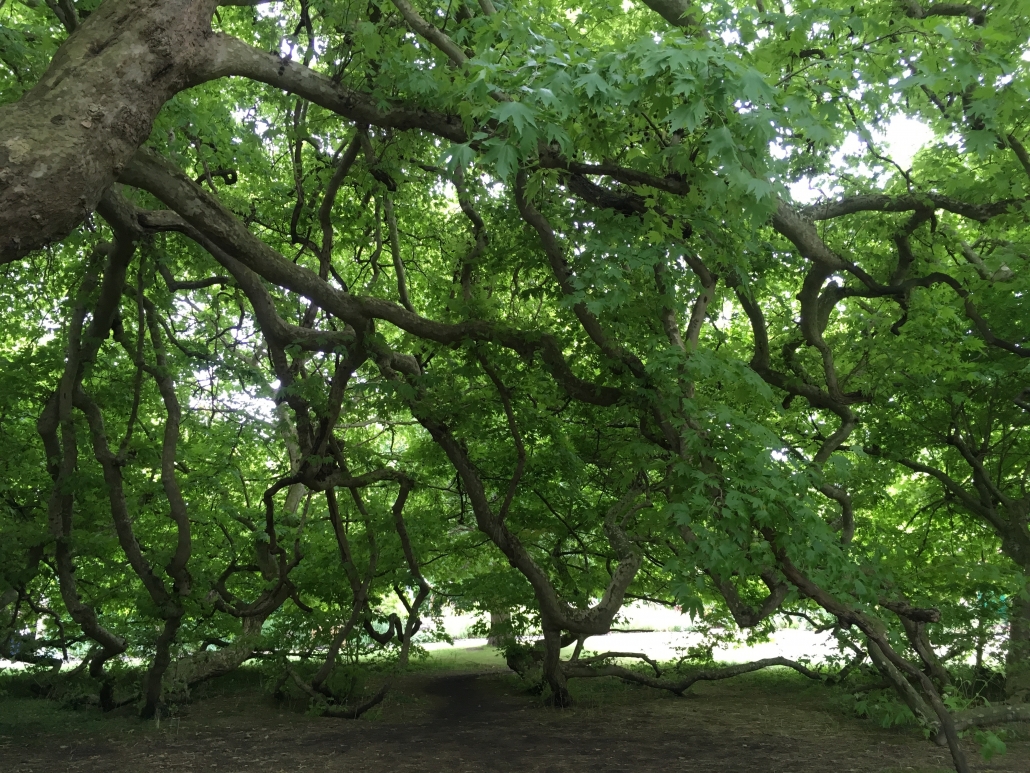
Trees do demand some reverence from us, for they see many lives of men, good or bad, and when they die they still serve us, if only to keep us warm. Our homes are full of dead trees, in books, and shelves, and chairs and whatever. Once the forests covered Europe, from sea to sea, and the survivors recall their ancient dominion – like Tolkien’s Ents. Trees exhale different scents. Stop. Breathe deep. Listen. They are rarely quite silent. They move, susurrate. The silent tiny stir of pine needles catches on their shine the momentary change of light. In the sun the buzz of insects tells how much the work of life is going on. The trees have a secret life. Recent research, indeed, suggests they work not just as individuals but as a mutually supportive community, interacting with each other, supporting the weaker ones, passing nutrients, and alerts, to each other along the nerves of their secret roots, in symbiosis with the mycelia and mycorrhizae that make the very soil a living thing. The largest trees in forests work as central hubs – some call them ‘mother’ trees, with a question-begging but seductive anthropomorphism – for vast subterranean mycorrhizal networks. The mother tree nurtures seedlings by infecting (is inoculating them a better term?) them with fungi and supplying them the nutrients they need for growth.
A poet friend of mine once said, ‘Trees in their community intercede for us.’ Stand in a still, cold, clearing, as I try to do each winter, and shades of an older world, the dark, fierce freedom of trees, press on you. For trees are much older than Man, the late comer. High on a Spitsbergen moraine, last summer, I found their tropical leaves in coal laid down in forests when no Man was and the ancient land was half a globe from where it now is scoured by the Arctic winter storms. They wait: they have lots of time. Leave a bit of land, even a building site, untouched for a few years, and bramble will nurse sycamore and ash, and birch, and the waiting trees, left alone, will surely close in wholly when our houses are no more. Forests always take back, in their patience, what we took from them for a space and thought our own.


